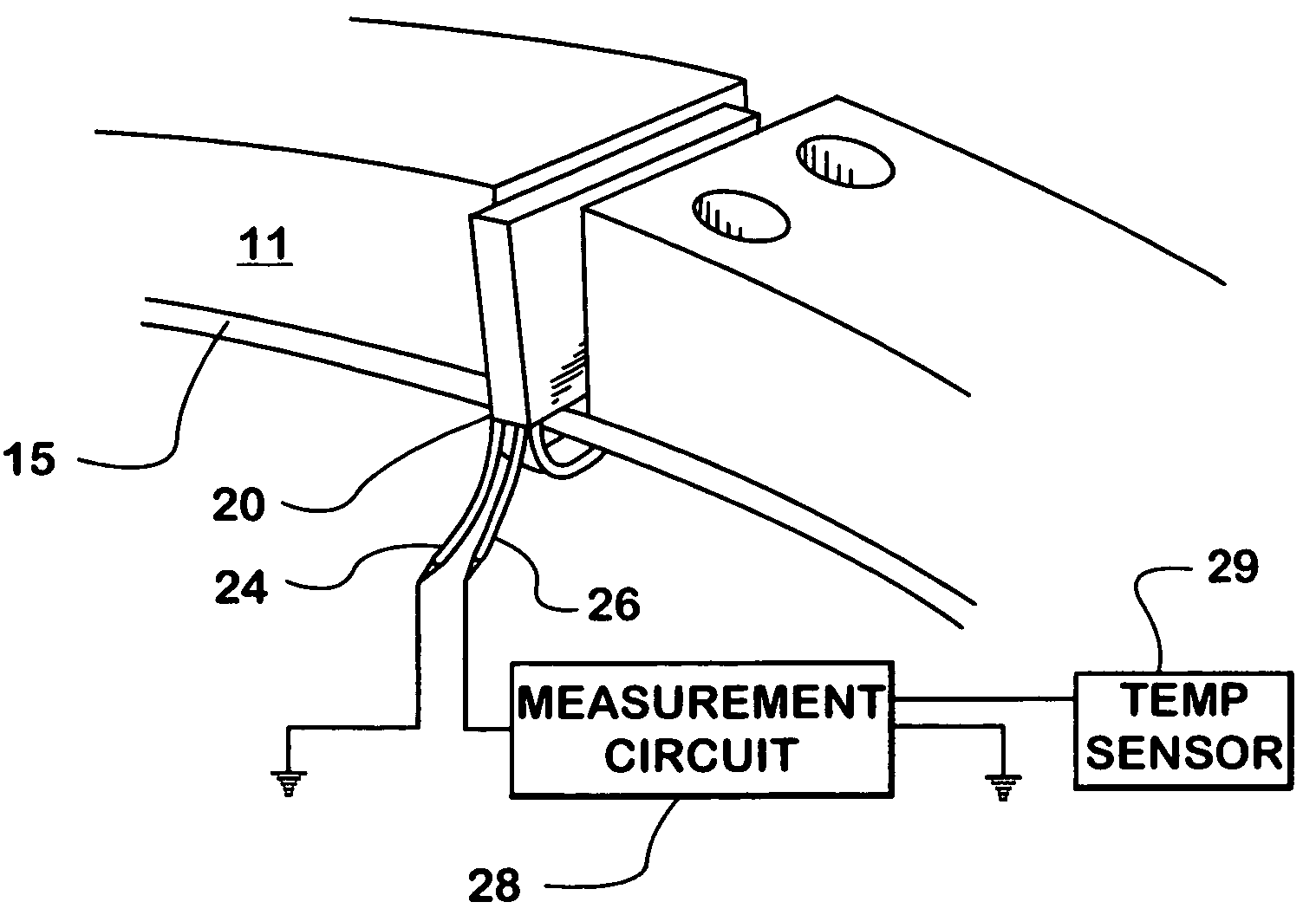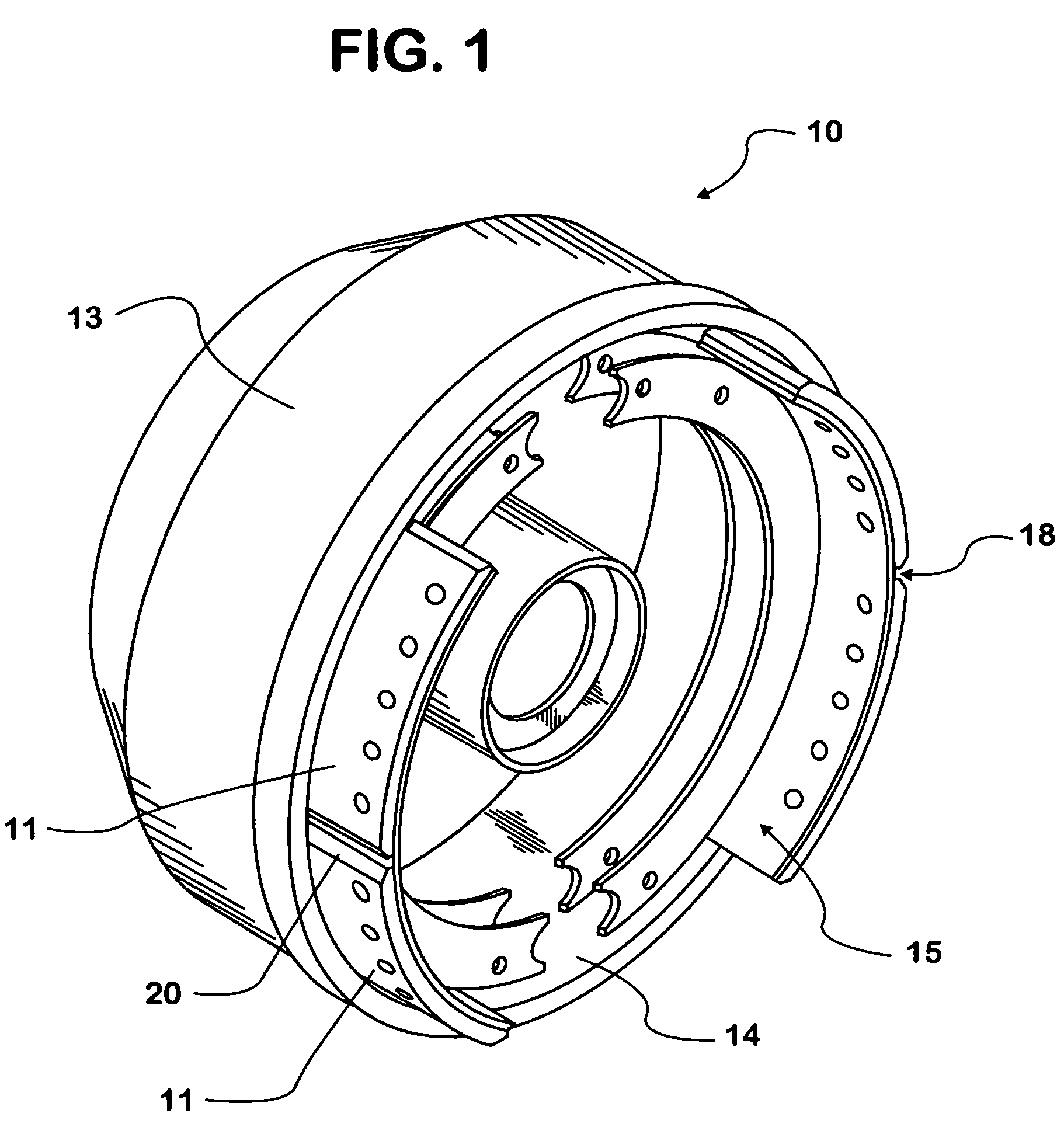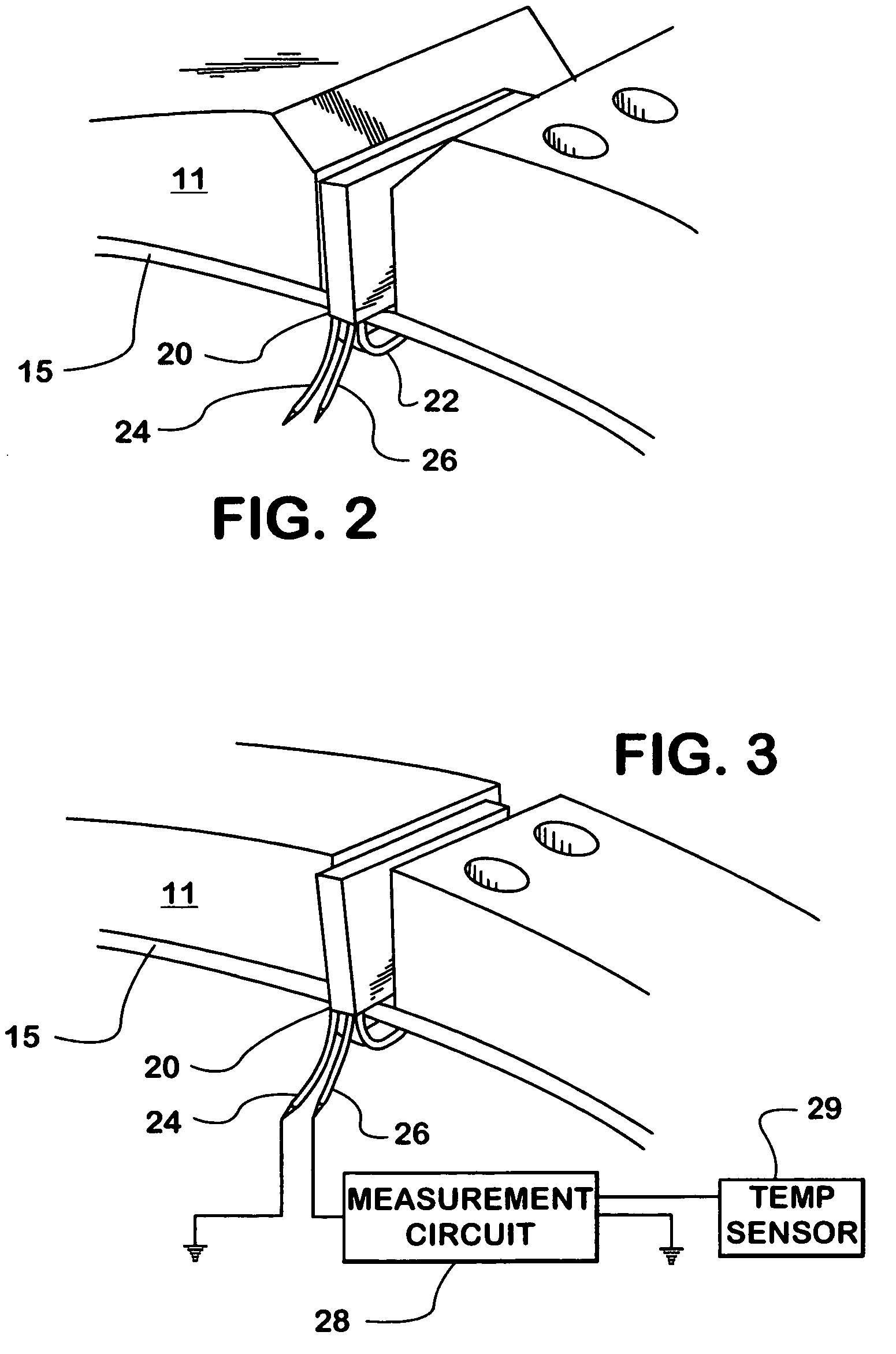Thin film sensor for brake lining pad wear and brake temperature sensing
a technology of temperature sensing and brake lining, applied in the direction of instruments, force/torque/work measurement apparatus, transportation and packaging, etc., can solve the problem and achieve the effect of increasing the electrical resistance of the modular sensor
- Summary
- Abstract
- Description
- Claims
- Application Information
AI Technical Summary
Benefits of technology
Problems solved by technology
Method used
Image
Examples
Embodiment Construction
[0018]The present invention is preferably employed in a drum brake assembly 10 as shown in FIG. 1. However, the modular sensor 20 may be adopted for employment in other types of brake assemblies. Referring now to FIG. 1, a brake drum 13 has an inner brake surface 14 for frictionally engaging the brake lining 11. An actuator such as an S-cam arrangement displaces the brake shoes 15 outwardly towards the inner brake surface 14 bringing brake lining 11 into contact with the inner brake surface of the drum 13. Brake linings 11 are mounted to the brake shoe 15 to frictionally engage the brake drum 13 and thus provide braking force. The generic brake drum arrangement 10 and actuation mechanism is completely conventional and is well known in the art.
[0019]Modular sensor 20 is preferably mounted between a pair of brake lining surfaces 11 in a gap 18 with a distal end substantially flush with the outer or friction surface of the brake lining 11. The specific connection of modular sensor 20 t...
PUM
 Login to View More
Login to View More Abstract
Description
Claims
Application Information
 Login to View More
Login to View More - R&D
- Intellectual Property
- Life Sciences
- Materials
- Tech Scout
- Unparalleled Data Quality
- Higher Quality Content
- 60% Fewer Hallucinations
Browse by: Latest US Patents, China's latest patents, Technical Efficacy Thesaurus, Application Domain, Technology Topic, Popular Technical Reports.
© 2025 PatSnap. All rights reserved.Legal|Privacy policy|Modern Slavery Act Transparency Statement|Sitemap|About US| Contact US: help@patsnap.com



